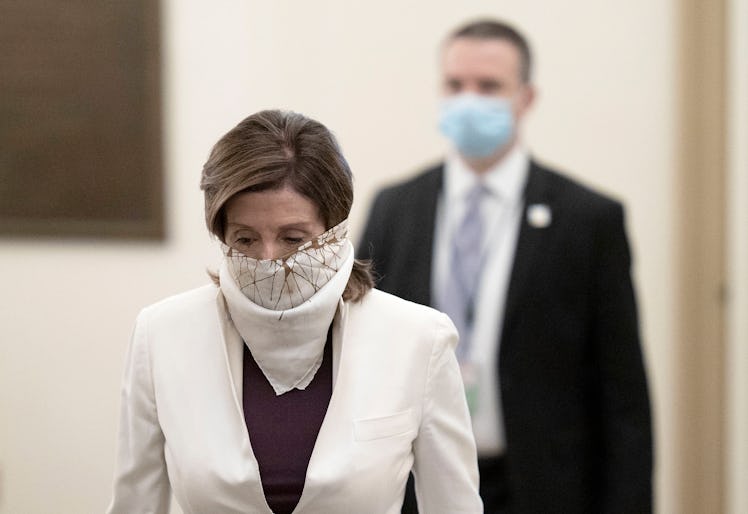
The Second Coronavirus Relief Bill Has A Clear Priority
As the coronavirus pandemic continues, legislators are scrambling to counter the economic and personal losses. On Tuesday, April 21, the Senate voted to pass a second coronavirus relief bill that contains nearly $500 billion in funding. The House is slated to vote on the bill on Thursday, April 23, and President Donald Trump is expected to sign it once it lands on his desk. So what's in the second coronavirus relief bill? This new bill, which comes less than a month after Trump signed a historic $2 trillion stimulus into law back in March, primarily focuses on boosting funding for small businesses.
On March 27, the first coronavirus stimulus package was signed into law. That bill allotted funding for small business loans and hospitals, as well as for state and local governments. It also included a one-time $1,200 stimulus payment for individuals. This second bill, which is expected to pass the House on Thursday, April 23, includes an additional $484 billion in funding to address the coronavirus pandemic, per NPR. The largest portion of this funding — $322 billion — will tentatively go to the small business loan program created by the first stimulus package, called the Paycheck Protection Program (PPP). On April 16, the PPP officially ran out of funding once it hit its $349 billion limit, and stopped accepting new applications from businesses seeking assistance during the pandemic.
As a result, lawmakers have faced mounting pressure to sign off on more funding for small business loans, ABC News reported. However, funding these loans has become a subject of partisan controversy, as Democrats seek to allocate more resources to businesses that don't necessarily have longstanding relationships with banks. During an April 16 press conference, House Speaker Nancy Pelosi stated that she and her fellow Democrats wanted to ensure that if the PPP gets more funding, "many more people get access to the credit," including small businesses in underserved or otherwise marginalized communities. According to NBC News, that's why roughly $60 billion of the PPP funding from the new coronavirus relief bill will be reserved for businesses that do not have established relationships with banks, including companies that are rural and minority-owned.
Although a big chunk of the funding from the new bill will go toward the PPP, the new relief bill also allocates money to a few other key areas. In addition to the money set aside for the PPP, the second coronavirus relief bill will provide $60 billion in loans and grants to the Small Business Administration’s disaster relief fund. The bill will also allocate an additional $75 billion for hospitals and $25 billion to expand coronavirus testing.
This push for testing has been a particularly contentious topic between Democratic lawmakers and the Trump administration. According to Politico, Democrats have advocated for a nationalized testing process to quickly distribute millions of coronavirus tests across the country, while Republicans are calling for states and the private sector to be held responsible for testing. Democrats blocked an earlier version of this second coronavirus relief bill because it didn't include additional funding for testing or hospitals, NPR reported. Unlike the March stimulus package, however, this new relief bill does not allocate any funding to state or local governments seeking relief during the coronavirus pandemic despite Democrats' efforts.
If you think you’re showing symptoms of coronavirus, which include fever, shortness of breath, and cough, call your doctor before going to get tested. If you’re anxious about the virus’s spread in your community, visit the CDC for up-to-date information and resources, or seek out mental health support. You can find all Elite Daily's coverage of coronavirus here.